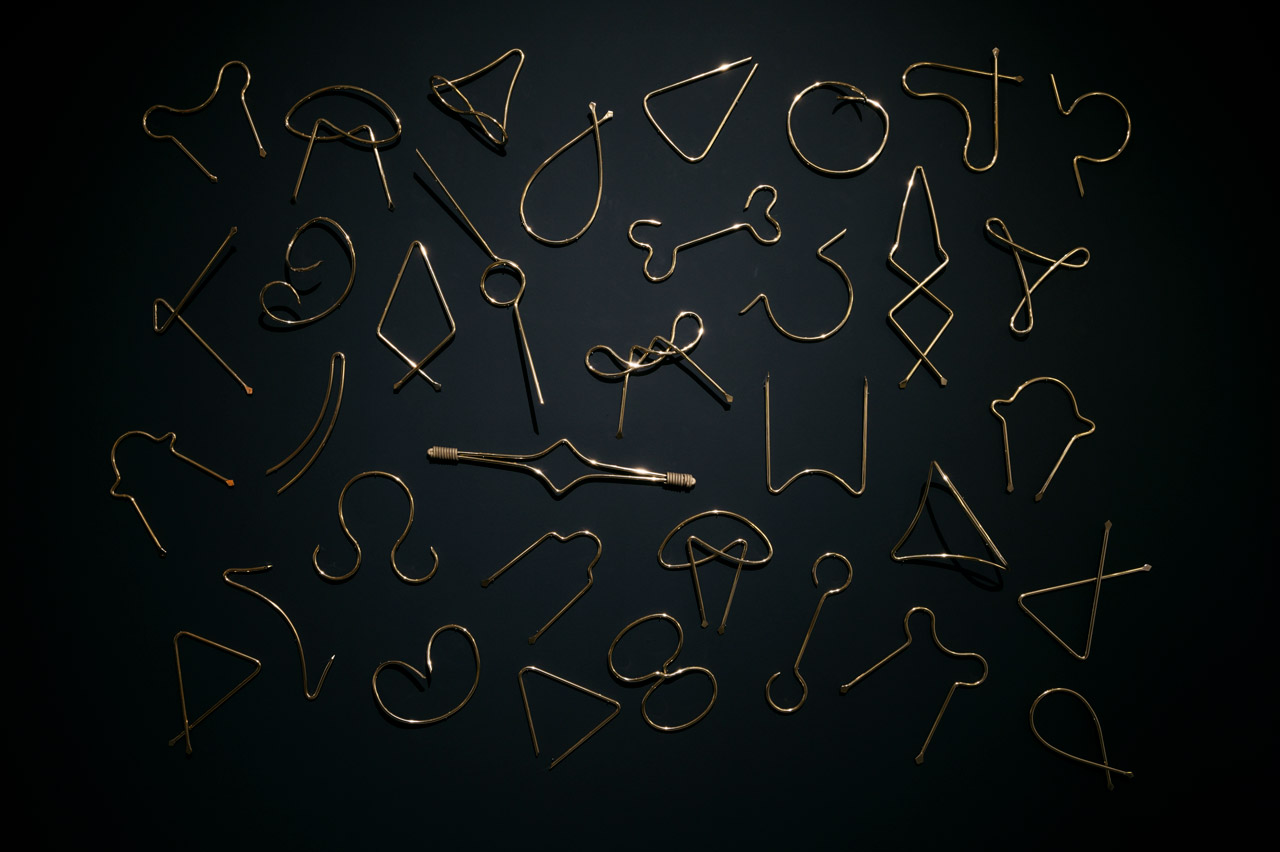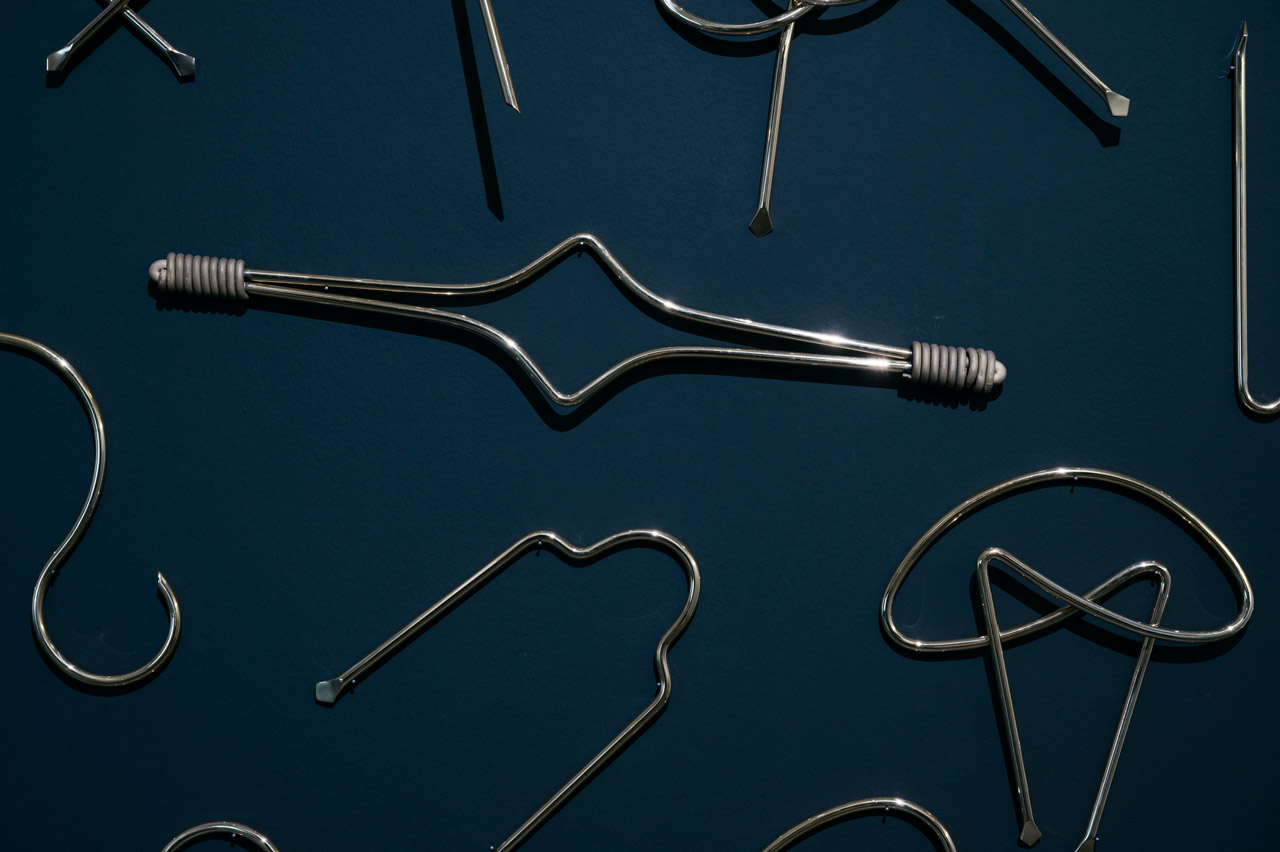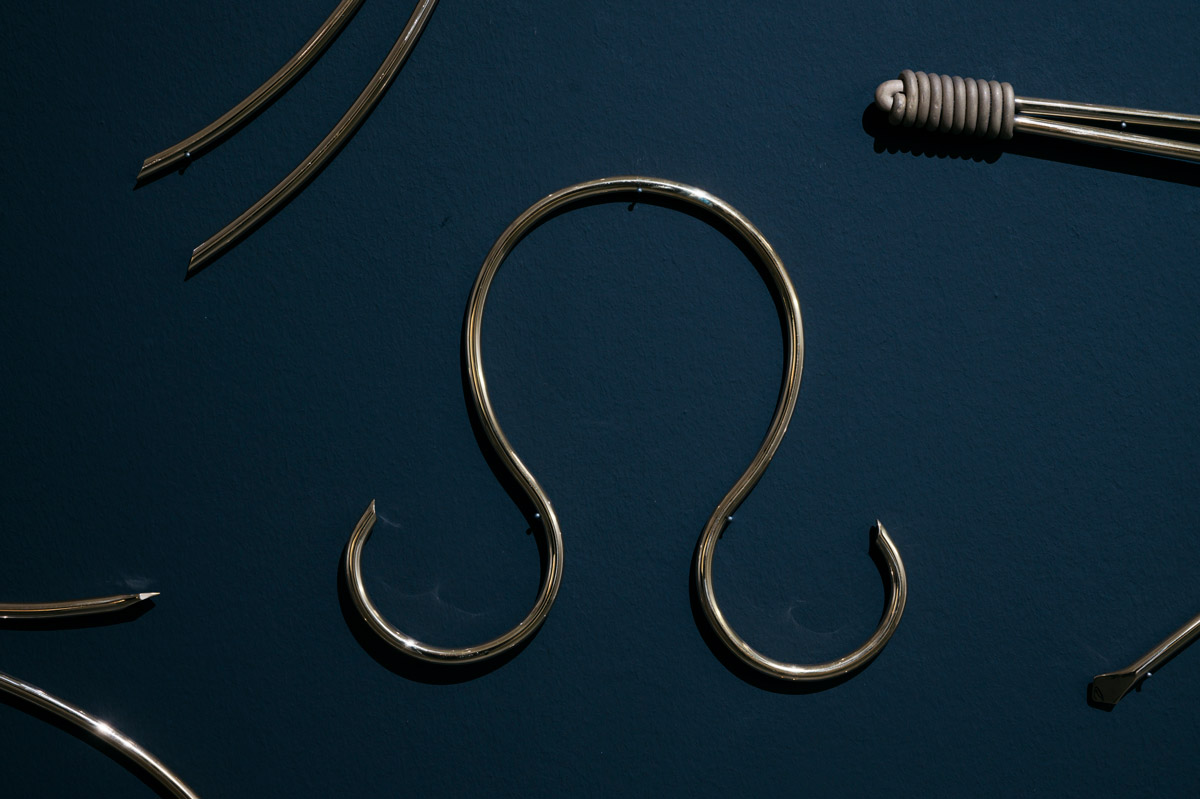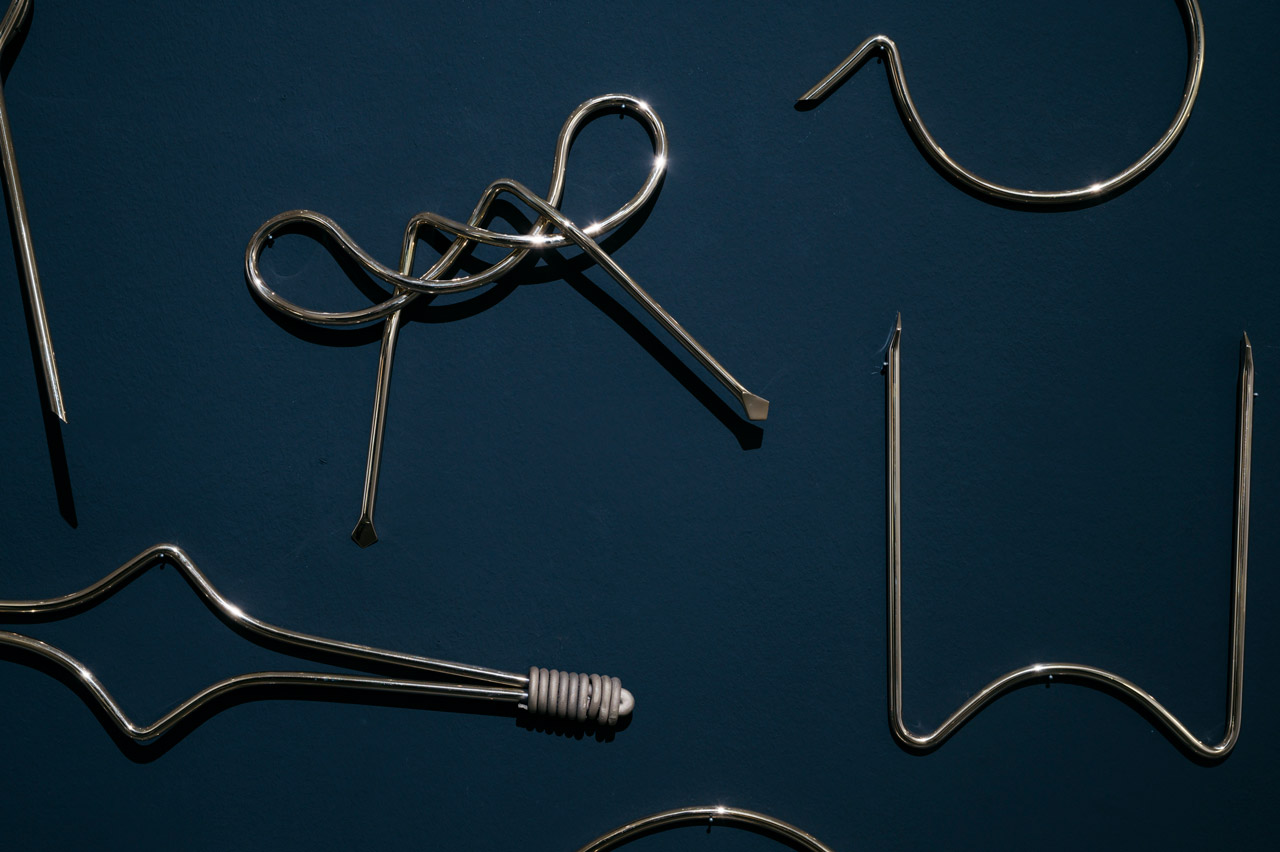The thirty-five brass shapes are enlarged replicas of Eduard Sievers’s “Personal Curves” from 1915. The Leipzig phoneti- cian and linguist Sievers (1850–1932) developed a method known as “Schallanalyse” (sound analysis) to reproduce the original voice of an author and to capture the musical charac- teristics inherent in a given literary text.
As a way of representing different voice types, Sievers created a series of brass wire shapes that he called “personal curves”. These were based on observations by the musicologist Gustav Becking, who developed the curves from movements made while conducting; they are also known as “Becking curves”. These visualized curves, also referred to as “optical signals”, were then used in an experiment: several people read a text by Friedrich Schiller aloud while holding a brass wire in each hand. A phonograph was used to record the vibrations of their chest and larynx, which supposedly corresponded to Schiller’s original tonality and emphasis due to the brass forms. The question of whether such linguistic theories can be proven remains unanswered.




